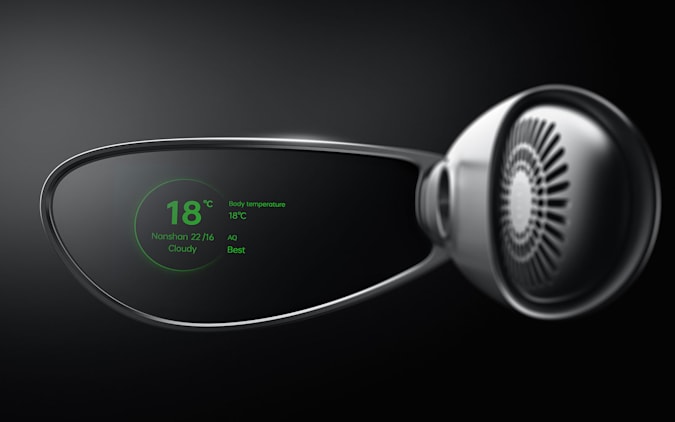Since the wider availability from his Enterprise Edition 2 In early 2020, but on the other side of the world, Oppo believes that now is the time to bring a direct competitor to market – if only in the Chinese market. After last year’s Oppo AR glass Concept, the new Oppo Air Glass will be available to Chinese consumers in the first quarter of 2022 at an undisclosed price. It comes in two parts: a detachable monocle waveguide device (in black or white) and either a silver half-frame or a black full-frame. And no, you can’t clip this 30 gram device onto your own glasses.
Similar to Google Glass, Oppo Air Glass is designed to provide simple information for use cases like navigation, translation, teleprompter, calendar, weather, fitness tracking and more. Oppo calls this “Assisted Reality” which makes the package portable, yet practical and accessible. This is achieved using an energy efficient “Spark Micro Projector”, roughly the size of a single coffee bean, containing a micro-LED chip to project a bright 640 x 480 image onto a waveguide display – one that is larger than that of Google Glass.
Oppo
Oppo Air Glass is owned by a. driven Qualcomm Snapdragon Wear 4100, which is similar to the chip in some of the latest fossil and TicWatch smartwatches. Once paired with one Oppo phone (with ColorOS 11 or higher) or on Oppo watch, you can toggle notifications by tapping the Air Glass’s slim touch bar, or simply nodding your head and then tapping again or shaking your head to close it. To switch between apps, just swipe the touch bar.
Oppo
With the Teleprompter app, you can upload your speech, set your text size and scroll speed via the smartphone app, and then, if necessary, tap the touch bar to scroll manually. Oppo is also testing hand gesture tracking via the Oppo Watch for a supposedly more intuitive control.
Oppo
If you happen to have two Oppo Air glasses and are having difficulty communicating with a foreigner, pair them and get your partner to wear one for instant translation – your device translates the other person’s voice on your screen and vice versa. However, only Chinese, English and Japanese are currently supported, with Korean to follow soon.
For the navigation app, Oppo worked with Baidu to integrate Baidu Walk & Bike Navigation and Explore Near. Don’t expect elaborate AR graphics here; Users simply see step-by-step navigation based on location and orientation, and voice commands are supported (presumably only in Chinese).
Oppo
An Oppo representative added that the Air Glass is the result of two previous designs that allowed the company to work with developers to build an ecosystem. In addition, the Chinese company will soon release a Smart Glass SDK to allow more developers – possibly also from overseas – to participate in the party.
When you consider how other companies like Meta, Evil, Amazon, Snap and Razor have focused on either audio- or camera-based smart glasses, Oppos’s strategy with its Air Glass is certainly a bit of a surprise. For Oppo, this is all pretty experimental for now, as the device will only hit the market in limited numbers in China, with each one labeled with a unique edition number on its packaging.
All products recommended by Engadget are selected by our editorial team independently of our parent company. Some of our stories contain affiliate links. If you buy something through one of these links, we may earn an affiliate commission.



